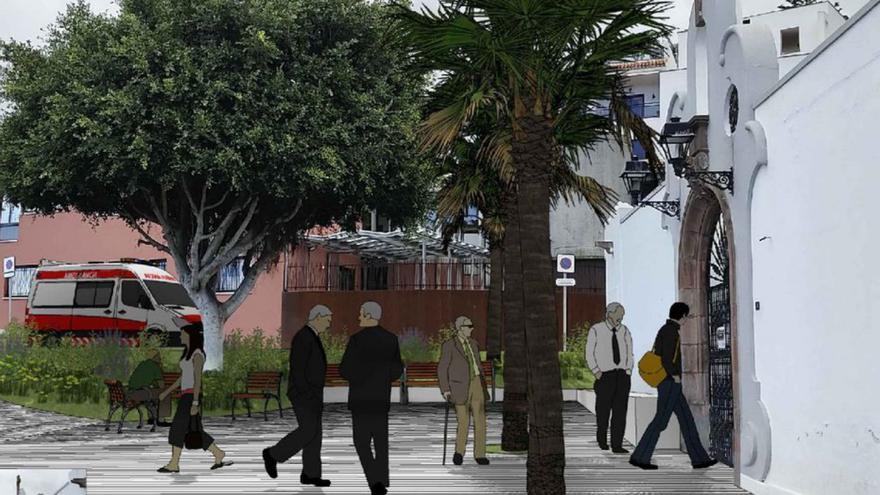
The General Directorate of Tourist Infrastructures of the Government of the Canary Islands contributes 1,500,000 euros to the Santa Úrsula City Council for the second phase of the project that will remodel and condition the historic environment of the municipalityan itinerary that surrounds the Church of Santa Úrsula, its square and the cemetery.
It is about continuing the redevelopment of the Mayor Fernando Luis street. Juan Acosta, the alderman, explains that the objective is “integrate this road into the environment, adapting it aesthetically and in line with the work previously carried out in the historic center”. It is one of the largest investments in Santa Úrsula in recent years and “will improve accessibility on this road” that leads to public facilities such as the health center, the funeral home, the municipal cemetery and the pedestrian that connects with Avenida de Las Palmeras .
The project, whose area of operation is 1,600 square meters, includes the semi-pedestrianization of the street and, as a most outstanding aspect, the configuration of a plaza and viewpoint area with garden areas in front of the cemetery and the funeral home. “It will be a complementary outdoor space, an open-air anteroom that will provide relief as a waiting area,” stressed the General Director of Tourism Infrastructures of the regional Executive, Francisco Miñarro.
The mayor announces a ‘parking’ near the highway as an essential work to improve mobility
The redevelopment work on Calle Alcalde Fernando Luis, which will be undertaken in the coming months, will include the removal of the existing pavement as well as the installation of the sanitation and rainwater networks. Likewise, the project includes facilities for telecommunications, low voltage network and public lighting.
The work also contemplates the placement of a special natural stone pavement, already used in the first phase, which will give uniformity to the entire area while solving the existing unevenness, while eliminating all architectural barriers. “Above the visual aspect is the functionality and accessibility of this space through which many residents pass daily,” underlines the mayor of Santaursulero.
This second phase will be completed with the provision of new lighting, vegetation and street furniture. «As it happened with the first phase, the transformation that the place will undergo will enhance its charm and enhance the attractiveness of our small historic center, achieving an environment in accordance with what our main Asset of Cultural Interest deserves, such as the Church of Santa Úrsula. and its plaza”, according to Acosta.
Other complementary actions will provide the area with two connection ramps with the new plaza that will be created in front of the cemetery, one will connect with Avenida de Las Palmeras and the other with the future parking lot that the Santa Úrsula City Council plans next to the link of the municipality with the Autopista del Norte (TF-5).
overflow parking
Currently, the local government works on lThe drafting of the park and ride project, which will play a fundamental role within the municipal strategy for the liberalization of parking lots on public roads and the promotion of mobility on foot through urban central areas. “Given its strategic location close to the highway, the municipal area, the commercial area and various public infrastructures, it will lighten traffic and vehicles in the center of the town,” says the mayor of Santa Úrsula.
The future car park will require a million euros of investment that will be provided by the Ministry of Public Works, Transport and Housing of the Government of Canary Islands. Juan Acosta adds that “it will be an infrastructure that will promote a better quality of life”, because it will promote walking through the town center or access to the bus at the stop located next to the highway, where the direct lines to the Metropolitan area pass. “Not only will urban mobility be improved and pollution will be reduced, but it will have a positive effect on the activity of the open commercial area of the municipality,” concludes Juan Acosta.















